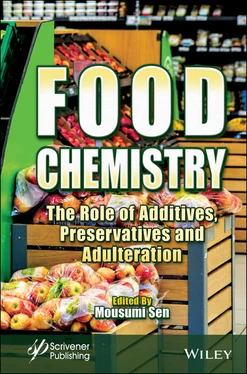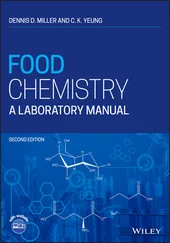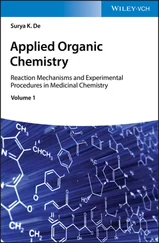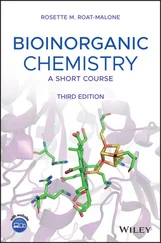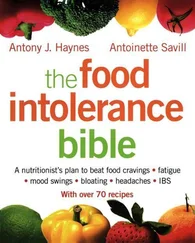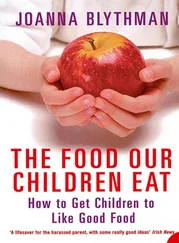Food Chemistry
Здесь есть возможность читать онлайн «Food Chemistry» — ознакомительный отрывок электронной книги совершенно бесплатно, а после прочтения отрывка купить полную версию. В некоторых случаях можно слушать аудио, скачать через торрент в формате fb2 и присутствует краткое содержание. Жанр: unrecognised, на английском языке. Описание произведения, (предисловие) а так же отзывы посетителей доступны на портале библиотеки ЛибКат.
- Название:Food Chemistry
- Автор:
- Жанр:
- Год:неизвестен
- ISBN:нет данных
- Рейтинг книги:5 / 5. Голосов: 1
-
Избранное:Добавить в избранное
- Отзывы:
-
Ваша оценка:
- 100
- 1
- 2
- 3
- 4
- 5
Food Chemistry: краткое содержание, описание и аннотация
Предлагаем к чтению аннотацию, описание, краткое содержание или предисловие (зависит от того, что написал сам автор книги «Food Chemistry»). Если вы не нашли необходимую информацию о книге — напишите в комментариях, мы постараемся отыскать её.
A unique book detailing the impact of food adulteration, food toxicity and packaging on our nutritional balance, as well as presenting and analyzing technological advancements such as the uses of green solvents with sensors for non-destructive quality evaluation of food.
Audience Food Chemistry: The Role of Additives, Preservatives and Adulteration
Food Chemistry — читать онлайн ознакомительный отрывок
Ниже представлен текст книги, разбитый по страницам. Система сохранения места последней прочитанной страницы, позволяет с удобством читать онлайн бесплатно книгу «Food Chemistry», без необходимости каждый раз заново искать на чём Вы остановились. Поставьте закладку, и сможете в любой момент перейти на страницу, на которой закончили чтение.
Интервал:
Закладка:
g. Salt can increase the blood pressure [23].
Table 2.7shows some specific additives and their health effect.
Table 2.7 List of additives and preservatives that can affect human health [24].
| Additive | Role of the additive | Food material where it is added | Possible health hazard |
|---|---|---|---|
| Erythrosin | Food color | Canned food, confectionary, and dairy products | Possible risk of thyroid tumor in animal study |
| Blue 1, Red 40, Yellow 5 and Yellow 6 | Food color | Different candy and confectionary product | Allergic reaction to some people. |
| Tartrazine | Food color | Ice cream, carbonated drinks | Skin rashes, asthma, and headache |
| Carmosine | Food color | Dairy products | Cause tumor to animals and DNA damage |
| Amaranth | Food color | Alcoholic beverages | Can cause asthma and allergies |
| Indigo Carmine | Food color | Bakery, confectionery, and dairy products | Can cause skin rashes, DNA damage and tumor to animals |
| Brilliant Blue | Food color | Dairy products and sweets | Can cause skin rashes, DNA damage and tumor to animals |
| Sodium benzoate | Preservative | Carbonated beverages, sauce, pickles | Can cause asthma and probable carcinogen |
| Sulfur dioxide | Preservative | Dried food juice | Nausea, diarrhoea, DNA damage to animals |
| Sodium metabisulfite | Antioxidant | Processed food | Can cause asthma |
| Potassium nitrate | Curing agent | Cured meat and meat products | Can form nitrosamine that is carcinogenic agent |
| BHA/BHT | Antioxidant | Fats/oils | Considered as carcinogenic agent |
| Monosodium glutamate | Flavor enhancer | Processed food | Can cause cancer, DNA damage |
| Aspartame | Sweetener | Processed food | Can cause neurological damage |
| Acesulfame K | Sweetener | Processed food | Can cause cancer to animals |
| Saccharine | Sweetener | Processed food | Can interfere DNA coagulation process |
| Bromate | Preservative | Processed food | Destroy nutrients in food |
| Caffeine | Flavorant | Processed food | Can cause heart defects |
| Chelating agent | Sequestering agent | Processed food | They affect mineral balance in our body |
| Auramine | Food color | Used in beverages | Retard growth and damage kidney, liver |
| Metanil yellow | Food color | Used in sweets | Responsible for weakness and food poisoning |
| Lead chromate | Food color | Added to turmeric for bright color | Anemia, abdominal pain |
Exposure to hazardous chemicals through food can create adverse health effects that depends on various factors like the following
a. Type of chemical
b. Dose of chemical
c. Duration of exposure
d. Frequency of exposure [25]
The safety of food additives is generally evaluated by international organization as well as local government. The goals for the assessment of the intake of food additive are as follows:
a. Monitoring the actual intake of food additives with respect to its acceptable daily intake (ADI).
b. Identify the consumer group who are at risk for the intake of additives close or more than the ADI value.
c. To offer information to the international organization for the reassessment of the regulations of food additives in case of high intake.
The safety assessment of the additives is based on the toxicity of the additives. On the basis of these toxicological data, food additives are classified as follows:
Group A: Additives having established ADI value
Group B: Additives generally considered as safe.
Group C: Additives with insufficient data.
Group D: Flavoring components.
Group E: Natural components with very few or no scientific safety data.
ADI value is determined by JECFA. ADI value is expressed on the basis of body weight, and it is the amount of food additive consumed over a lifetime without considerable health hazard. Only the food additives having JECFA safety assessment and having no appreciable health risk to consumers can be used. These additives might be natural or synthetic. Either on the basis of JECFA assessment or assessment of national authority authorized the use of particular additives at specified level for specific food. JECFA evaluation is based on review of biochemical, toxicological, and other relevant data that includes mandatory animal study and observation on human being. The toxicological test includes acute, short-term and longterm studies. The test determines how the additives are absorbed, distributed, and excreted. It also determines the harmful effect of the additives and its by-products. The Codex Alimentarius Commission establishes the guidelines on food labelling. The standards are implemented in most countries. Food manufacturers are obliged to indicate the additives used in their products. In European Union, there is legislation for labelling of food additives as per E numbers. People sensitive to certain food additives can check labels.
2.5 Conclusion
In the last 30 years, the use of food additives has been increased in huge amount. In present situation, over 200,000 tonnes of additives are used per year. It is estimated that, today, about 75% of western diet is made up of processed food and each person is consuming 3.6–4.5 kg of food additive per year. With the increase in the consumption of food additives, there is a concern with the various physical and mental disorders. More concern is with the effect of additives on children as consumption of additives is related to hyperactivity and hypersensitivity. Synthetic additives should be avoided more due to their potential toxic effect. Consuming excessive additives causes various adverse reactions like gastrointestinal problem, respiratory disorder, and neurological adverse reaction. Worldwide, there is a search for new and safe additive from natural sources to prevent spoilage of food with no adverse effect on human being. The demand for probiotic functional food is increasing day by day due to awareness of consumer about the impact of these foods on human health. There is a continuous development and reduction of the need of chemical additives. There are huge number of natural compounds present in nature that are still unknown. These natural compounds have a tremendous potential to act as new safe food additive. Synthetic food additives can react with the cellular components that lead to various effect on human health. If we have to use additives in food, then we should try to use the natural one which has minimum effect. Otherwise, we should use those additives that are generally recognized as safe (GRAS), and if they are not of GRAS category, then the ADI should not be exceeded. Before purchase of food the ingredient, it should be checked to avoid the foods containing artificial additives.
References
1. Abdulmumeen, H.A., Risikat, A.N., Sururah, A.R., Foods: Its preservatives, additives and applications. Int. J. Chem. Biochem. Sci ., 1, 36–47, 2012.
2. Vaclavik, V.A. and Christian, E.W., Food Additives, in: Essentials of Food Science. Food Science Texts Series , Springer, New York, 2008.
3. Pasca, C., Coroian, A., Socaci, S., Risks and Benefits of Food Additives – Review. Bull. UASVM Anim. Sci. Biotechnol ., 75, 2, 71–79, 2018.
Читать дальшеИнтервал:
Закладка:
Похожие книги на «Food Chemistry»
Представляем Вашему вниманию похожие книги на «Food Chemistry» списком для выбора. Мы отобрали схожую по названию и смыслу литературу в надежде предоставить читателям больше вариантов отыскать новые, интересные, ещё непрочитанные произведения.
Обсуждение, отзывы о книге «Food Chemistry» и просто собственные мнения читателей. Оставьте ваши комментарии, напишите, что Вы думаете о произведении, его смысле или главных героях. Укажите что конкретно понравилось, а что нет, и почему Вы так считаете.
